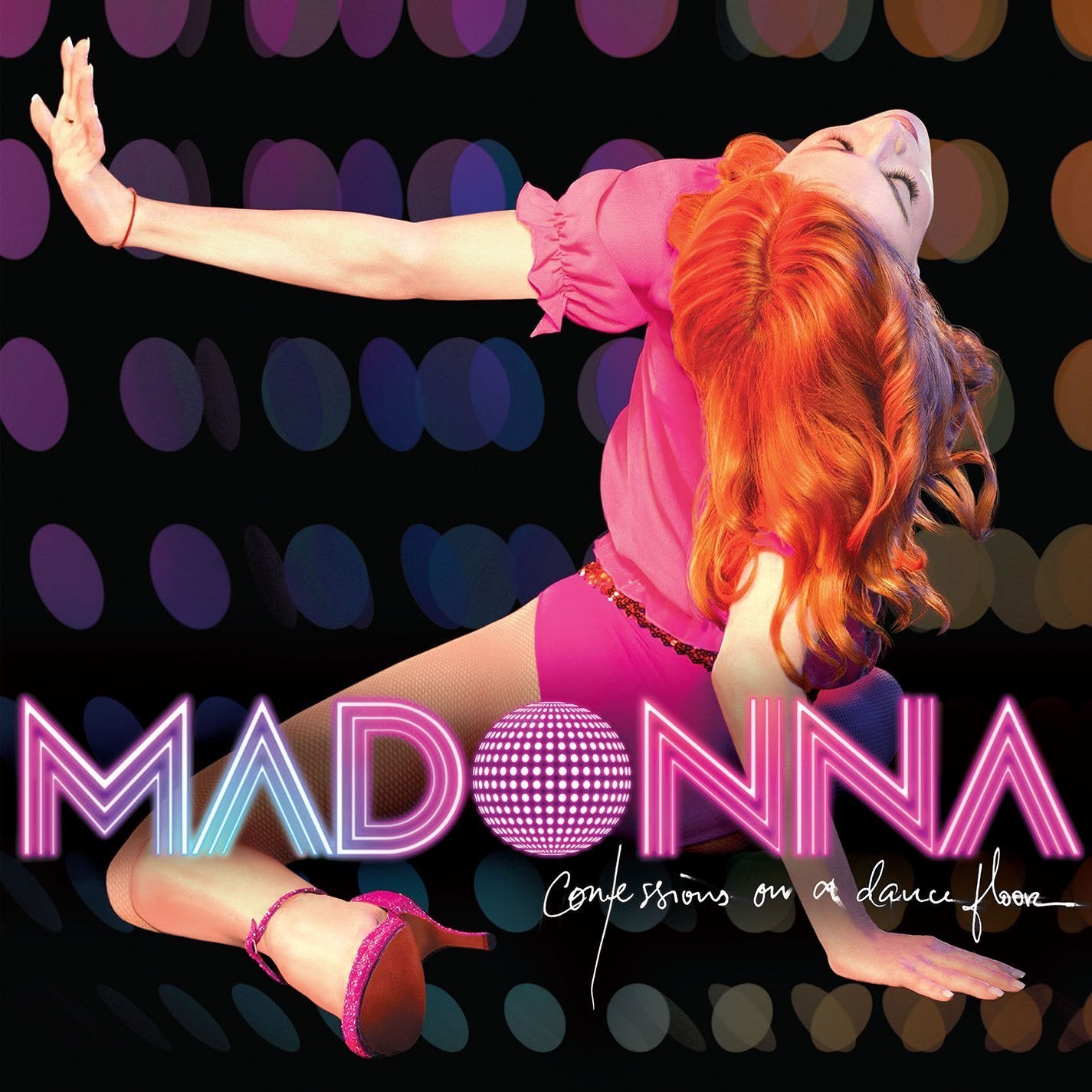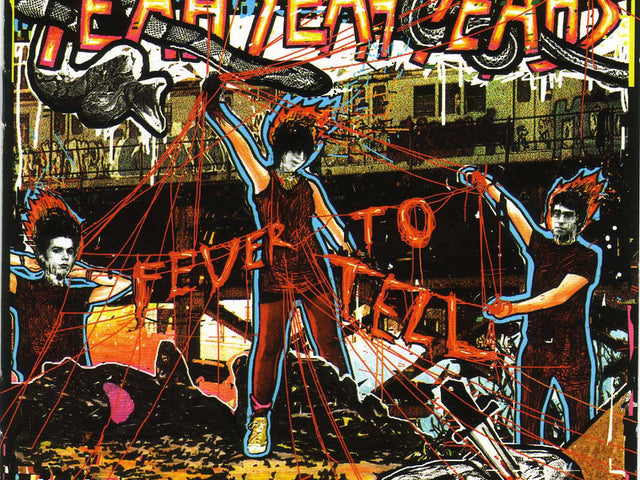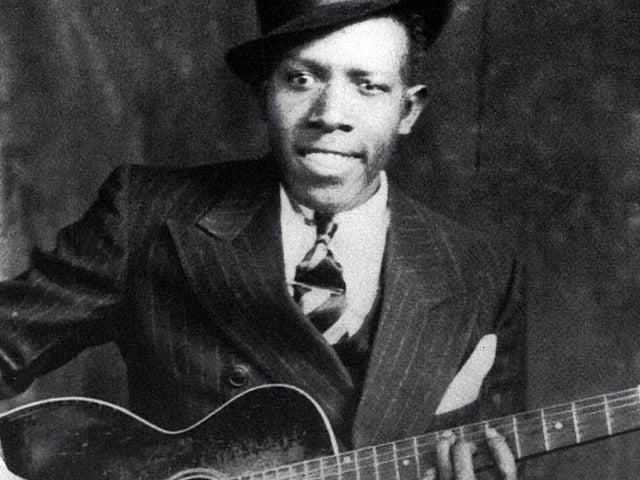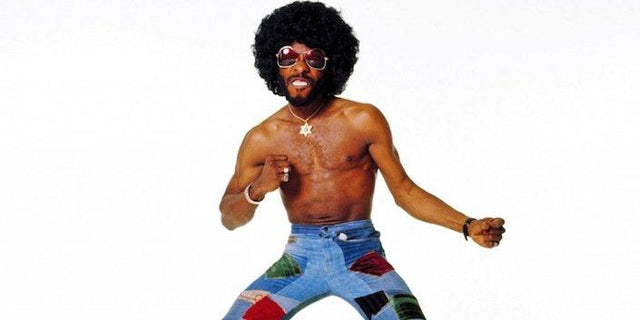Les 10 Meilleurs Albums de Madonna à Posséder en Vinyle
Est-ce que Madonna Ciccone savait qu'elle serait l'artiste féminine de tous les temps la plus vendue lorsqu'elle s'est dirigée vers New York dans la fin des années 1970 ? Probablement pas. Son but immédiat était de réussir en tant que danseuse. Des passages avec diverses troupes de danse, des cours de danse, travailler comme chanteuse et danseuse de secours, fréquenter des clubs de danse – tout tournait autour de la danse. Jusqu'à ce qu'elle rejoigne un groupe en tant que batteuse pour Breakfast Club. À ce moment-là, il s'agissait de créer de la musique. Finissant par faire le saut en tant qu'artiste solo, Madonna a canalisé la scène des clubs avec ses premiers singles au début des années 80, lançant son ascension au trône de la Reine de la Pop.
Madonna a rendu son image tout aussi importante que la musique, utilisant et revendiquant sans vergogne sa sexualité, tirant parti de la popularité croissante de MTV. Elle n'est pas la première star de la musique à utiliser la sexualité, et elle n'est même pas la première chanteuse à enregistrer des chansons sur le sexe (écoutez "Good Grindin’" d'Irene Scruggs ou n'importe quelle chanson de blues salace), mais son succès commercial et sa popularité l'ont mise en avant. Elle a affirmé son pouvoir dans une industrie musicale dominée par les hommes qui l'avait d'abord considérée comme une one-hit-wonder. Elle a été à la fois idolâtrée et critiquée, ses clips musicaux sont devenus des événements, elle a défini des tendances de mode et des repères culturels. Oui, il y a de nombreux singles à succès mais ses albums eux-mêmes sont des voyages à travers l'émancipation, l'amour et la perte, le conflit spirituel et la liberté d'un rythme dansant. Défiant. Séducteur. Unique en son genre. Madonna. Voici dix raisons pour lesquelles elle règne en maître.

Madonna
Lorsque Madonna a sorti son premier album éponyme en 1983, elle avait déjà quelques succès en boîte de nuit à son actif (“Everybody” et “Burning Up”). À une époque où la pop grand public était dominée par Michael Jackson grâce à Thriller, Madonna a percé en faisant sortir la dance-pop des clubs pour l'amener sur les ondes. Son image de femme de la rue l'a aidée à se démarquer des divas pop plus traditionnelles, proclamant audacieusement son intention de “régner sur le monde” à la télévision dans American Bandstand, et soutenant son ambition avec le succès croissant de ses singles, atteignant le Hot 100 avec “Holiday” puis atteignant le top dix avec “Lucky Star.” L'album lui-même a pris du temps pour se faire connaître mais est finalement devenu un des meilleurs vendeurs à la fin de 1984. Avec des synthétiseurs et des boîtes à rythmes, il est à la fois de son époque et étonnamment frais, avec cinq titres écrits par Madonna, pleins de mélodies pop irrésistibles et d'attrait pour la piste de danse. De plus, il sonne tout simplement fantastique sur vinyle. Même la réédition récente est magnifique, donc il n'y a aucune excuse.

Like A Virgin
Avec un titre d'album et une couverture provocateurs – avec Madonna et ses yeux de chambre à coucher portant une robe de mariée et une ceinture de Boy Toy – Like A Virgin (1984) est accrocheur et le soutient avec une série de super morceaux. Madonna visait un immense succès, s'associant avec le célèbre producteur Nile Rodgers, et a réussi au-delà des attentes. “Material Girl” est l'équivalent des années 80 de l'ancien succès de Motown “Money (That’s What I Want)”, où la sécurité financière et les hommes qui peuvent la fournir sont privilégiés. Les images lyriques favorisent le littéral plutôt qu'une insinuation, disant à son amant qu'elle se sent “Comme une vierge”, et qu'elle couvrira son partenaire de son amour sur tout son corps dans “Dress You Up.” À cause des clips musicaux populaires, on ne peut pas écouter cet album sans imaginer Madonna déguisée en Marilyn Monroe ou sur une gondole en désirant un gars masqué en lion. Mais elle surprend aussi avec sa reprise soul de “Love Don’t Live Here Anymore” de Rose Royce. Un album solide, du début à la fin, Madonna prouve qu'elle n'allait nulle part.

True Blue
Beaucoup de choses avaient changé lorsque Madonna a sorti son troisième album True Blue en 1986. Maintenant mariée, elle était également apparue dans les films Vision Quest (brièvement) et Desperately Seeking Susan (co-star) avec un autre film à sortir à la fin de l'été (Shanghai Surprise). Une Madonna plus expérimentée et mûre cherchait à faire des déclarations plus sérieuses tout en mettant la musique devant son image. Elle a écrit ou co-écrit tous les titres et a obtenu un crédit de co-producteur sur l'album. Mon morceau préféré est la ballade “Live to Tell” sur les effets que les mensonges peuvent avoir tout au long de la vie d'une personne. Madonna a écrit toutes les paroles et quiconque jette de l'ombre sur ses capacités d'écriture doit vraiment écouter cette chanson. D'autres points forts incluent le bonbon “True Blue” inspiré par son mari de l'époque Sean Penn, “Papa Don’t Preach” qui a abordé la grossesse adolescente, et les amusants “Where’s the Party” et “Open Your Heart.” True Blue a été un succès mondial, battant des records et la plaçant au statut de mégastar aux côtés de Prince et Michael Jackson.

You Can Dance
La seule chose qui ne peut être niée est que Madonna est, au fond, de la musique dance. You Can Dance (1987) est un album de remix, sorti à une époque où les albums de remix étaient quelque chose de nouveau, et sert également de première rétrospective, prenant des titres de ses trois premiers albums y compris des succès de club précoces comme “Everybody” et “Holiday” avec des morceaux plus récents comme “Where’s the Party” et le “Spotlight” précédemment inexploité, qui avait été enregistré pendant les sessions de True Blue. L'album est également devenu un incontournable pour les fans américains car il incluait “Into the Groove”, qui n'était auparavant disponible que sur des singles ou la version import de Like A Virgin. Les remixes prolongés de ces chansons dance incluent le travail de son ami de longue date Jellybean Benitez et Shep Pettibone, qui transforme déjà une grande chanson dance (“Into the Groove”) en un brûleur de piste de danse épique. Beaucoup des titres sont mélangés ensemble et le mix de “Into the Groove” dans “Where’s the Party” suffit à le rendre indispensable pour toute collection de Madonna et pour votre pile de vinyles de fête dansante. You Can Dance a été récemment réédité pour le Record Store Day, donc ne le manquez pas.

Like A Prayer
En tant qu'auteure-compositrice, Madonna avait montré qu'elle pouvait créer des tubes pop et dance contagieux, mais sur Like a Prayer, elle était prête à être plus révélatrice. Les thèmes généraux sont influencés par son éducation religieuse, son mariage raté (“Till Death Do Us Part”), et la mort de sa mère (“Promise to Try”). Travaillant à nouveau avec les producteurs Patrick Leonard et Stephen Bray, elle a également collaboré à un duo avec Prince (“Love Song”) qui a également joué de la guitare sur trois autres titres (“Like a Prayer,” “Keep It Together,” et “Act of Contrition”). Elle inspire les femmes à exiger du respect dans l’excellent “Express Yourself” et étreint l'amour dans le dansant “Cherish.” Au moment de sa sortie, il y avait beaucoup de publicité et de controverse autour des images religieuses utilisées dans le clip de “Like a Prayer”, qui est Madonna étant Madonna, mais des décennies plus tard, Like a Prayer figure parmi ses plus grandes réalisations artistiques et l'un des plus grands albums des années 80.

The Immaculate Collection
The Immaculate Collection (1990) est une compilation, mais contrairement à la plupart des albums de grands succès qui se contentent de rassembler rapidement les singles, toutes les chansons (sauf les deux dernières) ont été remixées par Shep Pettibone, le premier album à utiliser la technologie QSound. Certaines des chansons sont raccourcies ou accélérées avec de légères différences, et d'autres comme “Like a Prayer” et “Express Yourself” sont nettement différentes avec une musique d'accompagnement différente. C'est cette combinaison de familiarité et de poussée des frontières qui fait de Madonna une grande artiste ; obtenir cette compilation facilite l'écoute de ses succès des années 80 dans leur ensemble mais si vous voulez les mixages originaux, vous avez toujours besoin de ses albums. Vous en avez également besoin pour l'inclusion de la grande ballade “Crazy for You,” qui figurait sur la bande originale de Vision Quest, du chef-d'œuvre dance “Vogue” qui figurait sur l'album I’m Breathless inspiré de Dick Tracy, et des chansons toutes nouvelles “Justify My Love” et “Rescue Me.” Sincèrement, chaque côté de ce 2xLP est exceptionnel, en particulier la séquence “Express Yourself,” “Cherish,” et “Vogue” sur le côté D. The Immaculate Collection sert à la fois de fin de décennie qui l'a faite star et de prologue pour une Madonna prête pour les années 90.

Bedtime Stories
Madonna a collaboré avec Dallas Austin et Dave Hall, ainsi qu'avec Nellee Hooper et Babyface, pour son sixième album studio Bedtime Stories (1994). Sa popularité et son image avaient souffert un peu après le plus sexuellement explicite Erotica (1992) et son livre Sex. Le mouvement standard de relations publiques aurait été de s'excuser et de passer à autre chose, et la promotion pour Bedtime Stories semblait impliquer qu'une mea culpa était à venir, mais malgré le son plus doux, Madonna est restée défiant et sans excuses. Sur l'ouverture de l'album “Survival”, elle chante “Je ne serai jamais un ange.” Plus tard, c'est “Je ne suis pas ta pute, ne me mets pas tes merdes” dans “Human Nature.” Mais ce n'est pas que des morsures. Elle veut se rapprocher de quelqu'un dans “I’d Rather Be Your Lover”, danser sur “Don’t Stop”, et dire au revoir à un amant dans la sexy ballade “Take a Bow.” C'est discret et sous-estimé et c'est classique Madonna ; elle peut avoir visé un album R&B/pop plus mainstream, mais elle le fait à sa manière.

Ray of Light
Maintenant mère d'un tout-petit et ayant bénéficié d'un entraînement vocal pour le film Evita (1996), Madonna était prête à montrer un nouveau côté, réinventant encore une fois son image, délaissant le glamour pour un look plus naturel. Produit par William Orbit, Ray of Light (1998) varie de l'electro et techno au drum & bass, tout en maintenant ses racines dans la danse, et en montrant une plus grande gamme vocale. Les gens étaient impressionnés par ce changement mais si vous prestiez attention à Bedroom Stories qui avait une chanson écrite par Björk et l'implication de Nellee Hooper, vous savez que Ray of Light est en fait une progression logique vers l'electronica. La piste titre s'élève, elle reconnait sa croissance et la leçon apprise des erreurs du passé sur “Nothing Really Matters,” et elle hypnotise sur “Frozen.” Beaucoup de ces chansons s'associeraient parfaitement à une playlist aux côtés de Björk et les Chemical Brothers. On dirait que Madonna s'est réveillée un matin et a dit, ‘Je vais devenir une reine de la pop alternative maintenant’ et parce qu'elle est Madonna, elle le fait. Salué comme l'un de ses meilleurs, Ray of Light est indispensable.

Confessions on a Dance Floor
Madonna était toujours une grande influence dans l'industrie musicale au début des années 2000 mais la réception mitigée de American Life (2003) avait amené les gens à se demander si elle pouvait toujours apporter la chaleur. Madonna leur a répondu avec l'inferno qu'était Confessions on a Dance Floor en 2005. C'est un déluge sensoriel en néon rose, et ça déchire. Comme pour balayer les doutes sur le désir de Madonna de mettre le volume à fond, elle sample carrément ABBA dans “Hung Up.” Au moment où vous déposez l’aiguille, vous êtes transporté dans votre propre club personnel, le cœur battant sur “Hung Up,” imaginant une boule à facettes dans votre salon sur “Get Together,” et en lâchant simplement le torchon et vous lançant à fond sur “Sorry.” Ce que tous les fêtards savent, c'est que vous pouvez vous retrouver lorsque vous vous défoulez ; Madonna explore cela à mesure que l'album progresse, faisant de la piste de danse son confessionnal mais il n'y a ici aucune contrition. Madonna a récupéré la couronne de la danse avec Confessions, créant l'album disco moderne ultime auquel nous pouvons tous canaliser notre reine de danse intérieure.

Rebel Heart
Il s'était écoulé dix ans depuis le succès de Confessions, et la réception mitigée de Hard Candy (2008) et MDNA (2012) avait à nouveau inquiété les fans. Mais comme elle nous le rappelle dans Rebel Heart de 2015, “Bitch I’m Madonna.” Sur des chansons qui mélangent des genres comme l'électronique, le rap, la dance-pop et le reggae, Madonna collabore avec un éventail d'artistes tels que Avicii, Diplo, Nicki Minaj, Kanye West, Chance the Rapper, Nas, etc. L'album 2xLP est un mélange éclectique de chansons qui parvient à la fois à raviver la nostalgie et à penser à l'avenir. En gros, c'est un album de Madonna. Comme une fabuleuse reine guerrière, elle anéantit les haineux, reste positive face à un amour perdu dans “Living for Love,” dit merde à un ex dans “Unapologetic Bitch,” et devient impertinente dans “Bitch I’m Madonna.” Dans la ballade pop “Joan of Arc”, elle s’ouvre sur le fait qu'elle n'est pas imperméable aux critiques et plus tard offre des souvenirs de sa carrière dans “Veni Vidi Vici” et “Rebel Heart”, réfléchissant à son statut d'icône de la pop, ses erreurs et ses triomphes. Rebel Heart met en avant une Madonna à l'aise, confiante et prête pour la suite.
Marcella Hemmeter est écrivaine indépendante et professeure associée vivant dans le Maryland, originaire de Californie. Lorsqu'elle n'est pas occupée par ses délais, elle déplore souvent le manque de tamalerias près de chez elle.



